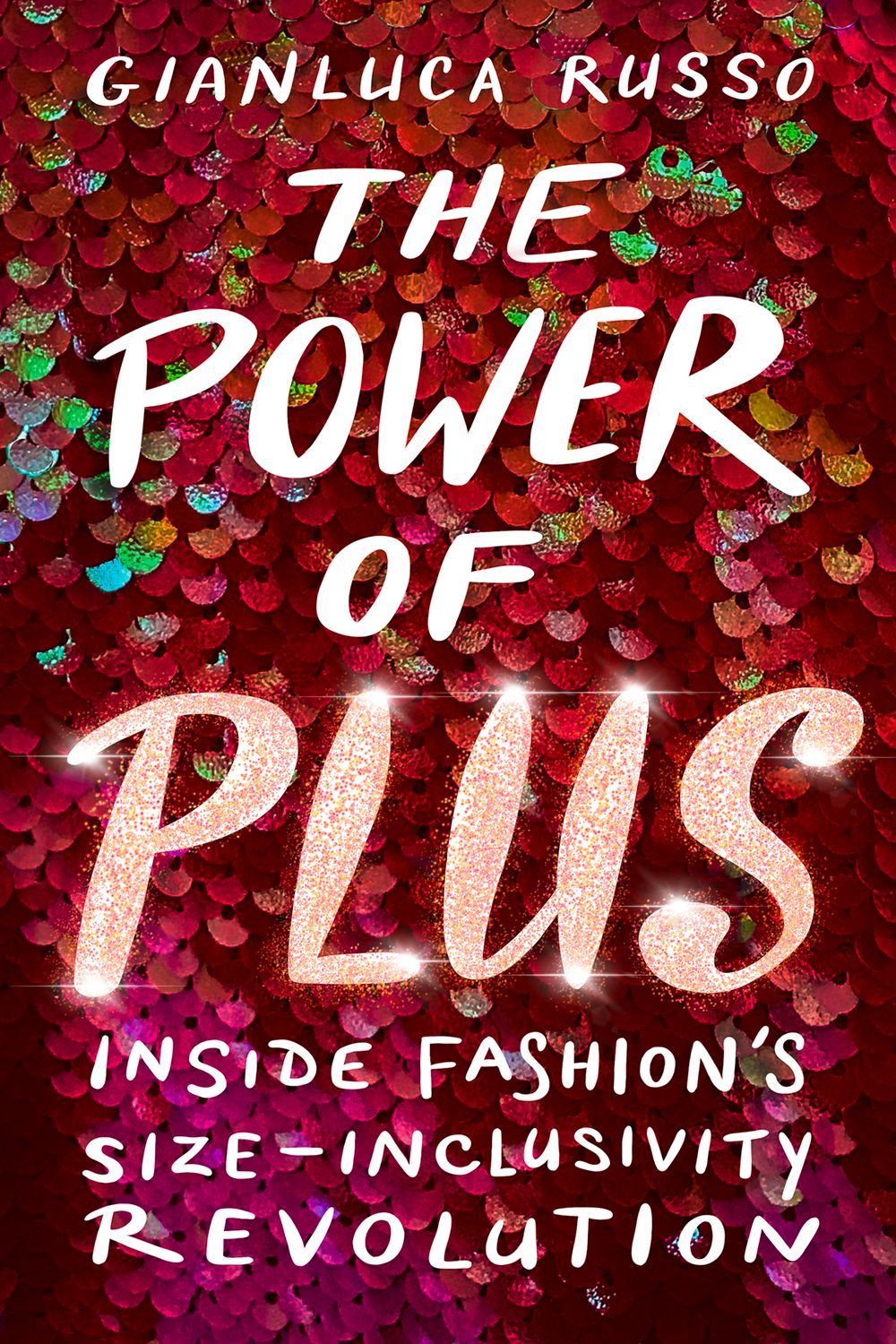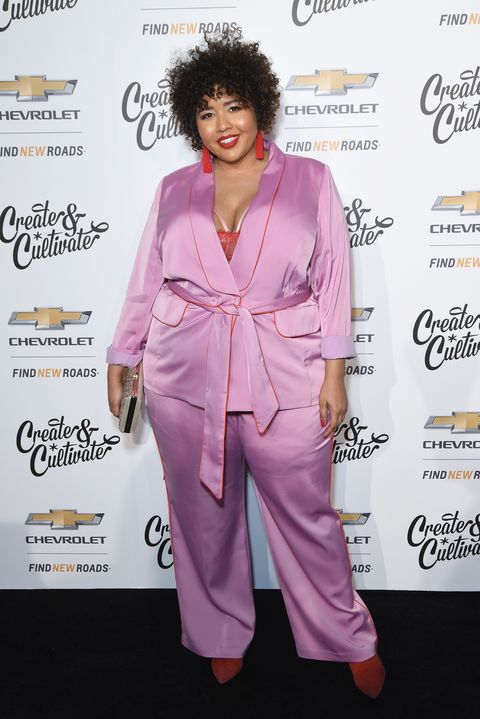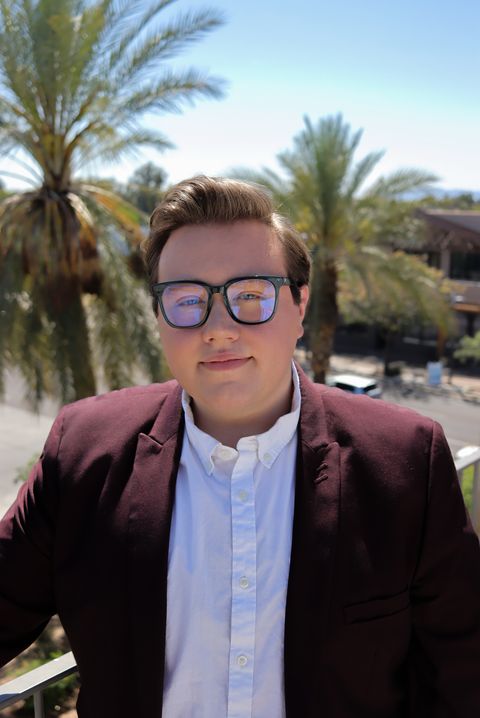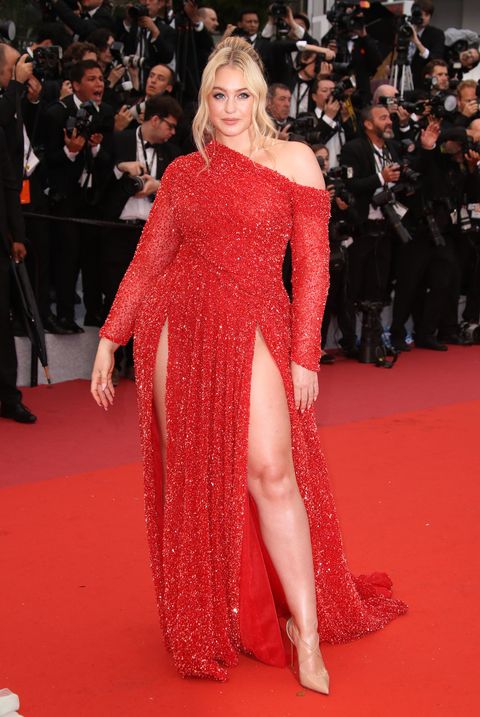Style Points is a weekly column about how fashion intersects with the wider world.
I distinctly remember meeting Gianluca Russo for the first time at a Project Runway taping several years ago. Back then, he was a young reporter whose enthusiasm for fashion was palpable. Ever since, he’s zeroed in on a specific beat: plus-size fashion. His new book, The Power of Plus, out today, is a natural extension of that reporting, offering an honest take on both the strides the industry has made—and the long way that it still has to go—when it comes to representing a range of body types. In its pages, he interviews everyone from early curve pioneers like Emme to current stars such as Nadia Aboulhosn, Candice Huffine, Yumi Nu, and Iskra Lawrence. I spoke to Russo about fashion’s internalized fatphobia, tokenism on the runway, and his hopes for the future of size equality.
How did you form relationships with people over the course of your time reporting? How did you decide which voices you wanted to include in the book?
I was welcomed into the plus-size fashion space very quickly, simply because I was so ready to talk about this. It was a topic that had always been on my mind since I was in elementary school, but something I was never able to verbalize. The second I saw other people speaking out about body diversity and what it’s like to live in a plus body in our society, I resonated with that so quickly. Leading with that, and showing how deeply I cared about this because of my personal experience living in a plus body, showed people the investment I wanted to make. I think there’s something really special when you’re able to bond over the very thing that separated you for so long.
It’s about more than just including one or two bodies in a shopping roundup. It’s about really centering these voices.”
There are over 80 people included in the book. It was difficult to choose who would be in here because I’d spent five years before this interviewing hundreds of people in the plus-size fashion space. What I wanted to do, rather than center singular stories and moments of success, was find people who represented individual communities within this space so that everyone could see themselves represented.
I remember the gradual change in the way that fashion media worked when blogging was becoming a thing. People were able to take control of the narrative through blogs, and then through social media and influencing. Can you talk about how the media landscape changed and started to accommodate more body positivity?
I think once we had the digital age and the rise of the first plus-size influencers, it was undeniable that there was a momentum, and eventually that began to infiltrate fashion.
Now, with social media, of course we know there are many negatives to it, and we could definitely talk about that forever. But I think at that point, there were so many positives, because it was new and people just wanted to connect, feel seen, and be part of a community, especially in the plus-size space, and social media gave them that. It’s about more than just including one or two bodies in a shopping roundup. It’s about really centering these voices.
What do you think the industry has done wrong when it comes to gatekeeping and operating in a way that excludes so many people? And do you think that it’s really becoming more inclusive?
For so long, fashion has operated under this idea that image is everything. They have pushed away anyone who they feel doesn’t reflect their ideal customer or aesthetic. And for a long time, that’s meant they’ve rejected plus-size bodies. I think that especially higher-end luxury fashion doesn’t necessarily see a market value yet more than just the power of representation. The market is worth over $24 billion; 68 percent of American women are plus-size. We have all these numbers that tell us the women are there. They have money. Why wouldn’t you want to market to them?
There’s been such a focus on external representation that we’ve applauded people for putting one or two plus models down the runway. And it’s like, okay, great, but does it actually do anything to advance plus-size fashion?”
I think the problem is twofold. There’s still a large part of the fashion industry that doesn’t want plus to be a part of their narrative. That fatphobia still exists. But then there’s [the mass market], and what’s the biggest problem there? And I think it is that plus-size women are not shopping as much as we had been told they would if we made the options. Why is that? I think a lot of it is, we’re just not reaching her in the right way.
Do you think there’s also a trust gap of some kind, because fashion wasn’t speaking to the plus-size customer and wasn’t including her for so long?
Absolutely. I think that one of the biggest problems here is that people who have been told for 40-plus years, “You can’t shop here,” are not going to have any trust in a brand just because they extend their sizes to a 3X. So much of it is conditioning. And I think until that trust is developed, there’s not going to be this return on investment that brands want to see.
For the past couple of seasons, the runways have had less body diversity. And when you do see clothing on a plus model, often it isn’t made for public purchase. It’s done custom for that person, or it’s done for a celebrity. You can’t go into the store and buy it, and you can’t buy it online in that size. And it feels like this goes along with brands pulling back on plus or slashing their plus divisions.
I think in those fashion week spaces, body diversity is not a priority for a majority of people, and not just designers and the people putting the shows on, but the attendees as well. Going to fashion week, you get that message very fast: If there is a plus model, it’s great. If not, a lot of people won’t even notice, because they’re not impacted by it. If you don’t fully feel that power of representation yourself, you’re not going to notice whether or not it’s there. And it is discouraging: in recent seasons, especially the past year or so, we have seen such a decrease in the amount of plus models used, and more of a push towards that aesthetic of the early 2000s, which is dangerous as well.
I don’t necessarily feel as hopeful as I did when we first came into this industry. I think a lot of it is the fact that designers can get away with it, still. And if they use a plus model, it’s a great moment, but they’re not going to make the clothes because they feel like no one’s going to actually buy them, so they’re just doing it to kind of get the pat on the back for representation. I think that’s one of the discouraging parts of social media; there’s been such a focus put on external representation that we’ve applauded people for putting one or two plus models down the runway. And it’s like, okay, great, but does it actually do anything to advance plus-size fashion?
Something that you talk about in the book is the fact that fatphobia is linked to anti-Blackness. And you write about the role of Black women in the body positivity movement, which I think is really important to discuss. Can you talk about what you learned from your research and interviews on that front?
What I love about the conversation around plus-size fashion and body positivity is how intersectional it is. Regardless of your background, your race, your social status, where you live, anyone can be plus-size. There’s such a spectrum of experiences. I really wanted to capture that in the book, to show all the different ways being plus-size affects people of different backgrounds.
A lot of plus fashion, at its core, is rooted in the work that Black women have done—largely because body positivity, as we know it, stemmed from the fat acceptance moment of the 1960s, which was led by Black women. They set that foundation that everything has grown from, but that’s at its core. And any time you look at a really exciting moment in plus fashion, a lot of it is driven by Black women’s contributions, despite the fact that they don’t often get that credit. That’s why it was really important for my second chapter to open up with the story of Toccara Jones, who was the first plus-size contestant on America’s Next Top Model, and how incredible she was on that show in just being bold and confident and proud.
What do you think about the rise of male models like Zach Miko in the plus space, and how everything we’re talking about affects men, too?
It’s so new, and seeing how long it’s taken for the women’s [plus-size] movement to even come to where it is today, I’m not necessarily hopeful we’re going to see a big change in men’s anytime soon.
There have always been plus-sized men [represented in pop culture]. However, who are those characters? Usually they’re slobs; they’re people who are being laughed at. And is that positive representation? Representation isn’t just good across the board. It needs to be something that makes you feel good. And I think the body standards for men are progressively getting worse because of toxic masculinity. Men have been told: Don’t care about fashion. If you hate yourself, don’t talk about it. Don’t talk about body image, hide it, just go to the gym, work out, all these things. They’’e internalizing everything.
You cover this beat pretty frequently, and you’re an advocate for body positivity. How do you draw the line between advocacy and reporting? You mentioned that you felt pressure to sugarcoat things a little bit [for the book]. And I feel like you ultimately resisted that pressure. You want to talk about the great strides that are being made, but you don’t want to be too much of a cheerleader and say that everything’s perfect. How do you navigate that?
One of my friends, who published her book a few years ago and writes about diversity in the ballet world, was like, “Start the chapters with a story, and then you can get into the reporting.” And that framed everything for me. I’m either starting the chapters with a story about someone in the community, or with my story. Separating it that way in my mind allowed me to separate the advocacy from the journalism, because I could still incorporate my perspective, which I think is valuable to the story, but I didn’t let it clash with the reporting.
What do you think the future of the plus-size fashion world is, and what would you like to see happen?
I think the future is size equality, which is representation across sizes. We’re so divided now between straight size and plus, and there’s division within the plus-size fashion space. When I see the future, it’s coming together. Less of a focus on plus versus straight and more on size equality, which is across the board. If a brand goes from a zero to an 18, show me everybody there. Don’t just show me all straight sizes, and then one plus. Show me the full spectrum.
This interview has been edited and condensed for clarity.





